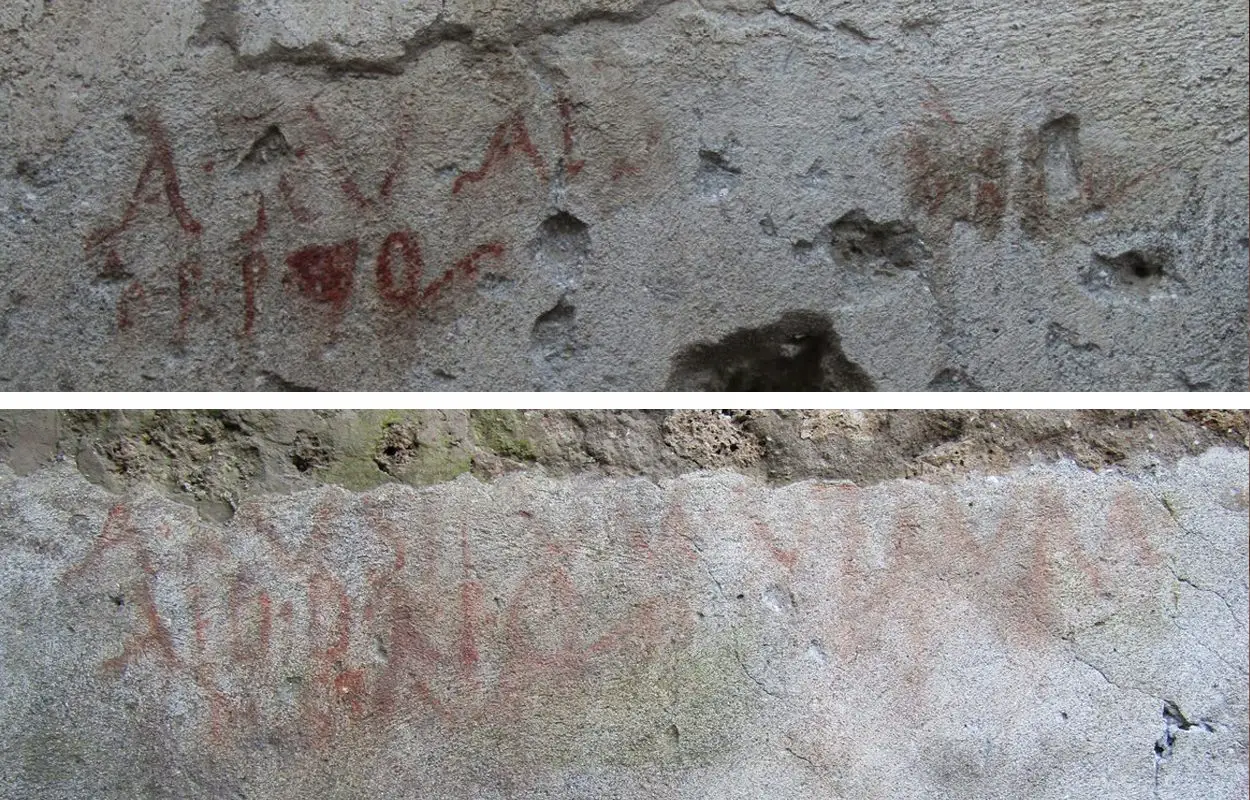In a press announcement by the Pompeii Archaeological Park, archaeologists have found electoral inscriptions in a house located in Insula 10 of Regio IX in Pompeii.
Pompeii was a Roman city in the modern commune of Pompeii in the Campania region of Italy. Pompeii, along with the Roman town of Herculaneum were buried under 4 to 6 metres of volcanic material during the eruption of Mount Vesuvius in AD 79.
The Vesuvian eruption spewed forth a deadly cloud of super-heated tephra and gases to a height of 33 km, ejecting molten rock, pulverised pumice, and hot ash at 1.5 million tons per second.
Following the recent discovery of a still life fresco, the team have found electoral inscriptions in support of a candidate named Aulus Rustius Verus who is running for the role of an aedile. Aediles were responsible for maintenance of public buildings (aedēs) and regulation of public festivals. The office of the aedilis was generally held by young men intending to follow the cursus honorum to high political office, traditionally after their quaestorship but before their praetorship.
According to the press announcement: “Normally, these writings are found on the external facades of buildings, where the people could read the names of the candidates for the city’s magistrates. The presence inside the home was likely for events such as dinners to support candidates with the aim of promoting the campaign electoral to their guests”
The house owner was apparently a supporter of Aulus Rustius Verus, further evidenced with the discovery of a millstone placed in the atrium of the house inscribed with the candidates initials, ARV.
Excavations also found an altar in the house Lararium (a shrine to the guardian spirits of the Roman household) along with votive offerings of figs and dates used in rituals, as well as the traces of fruits, fish and meat.
Header Image Credit : POMPEII SITES





